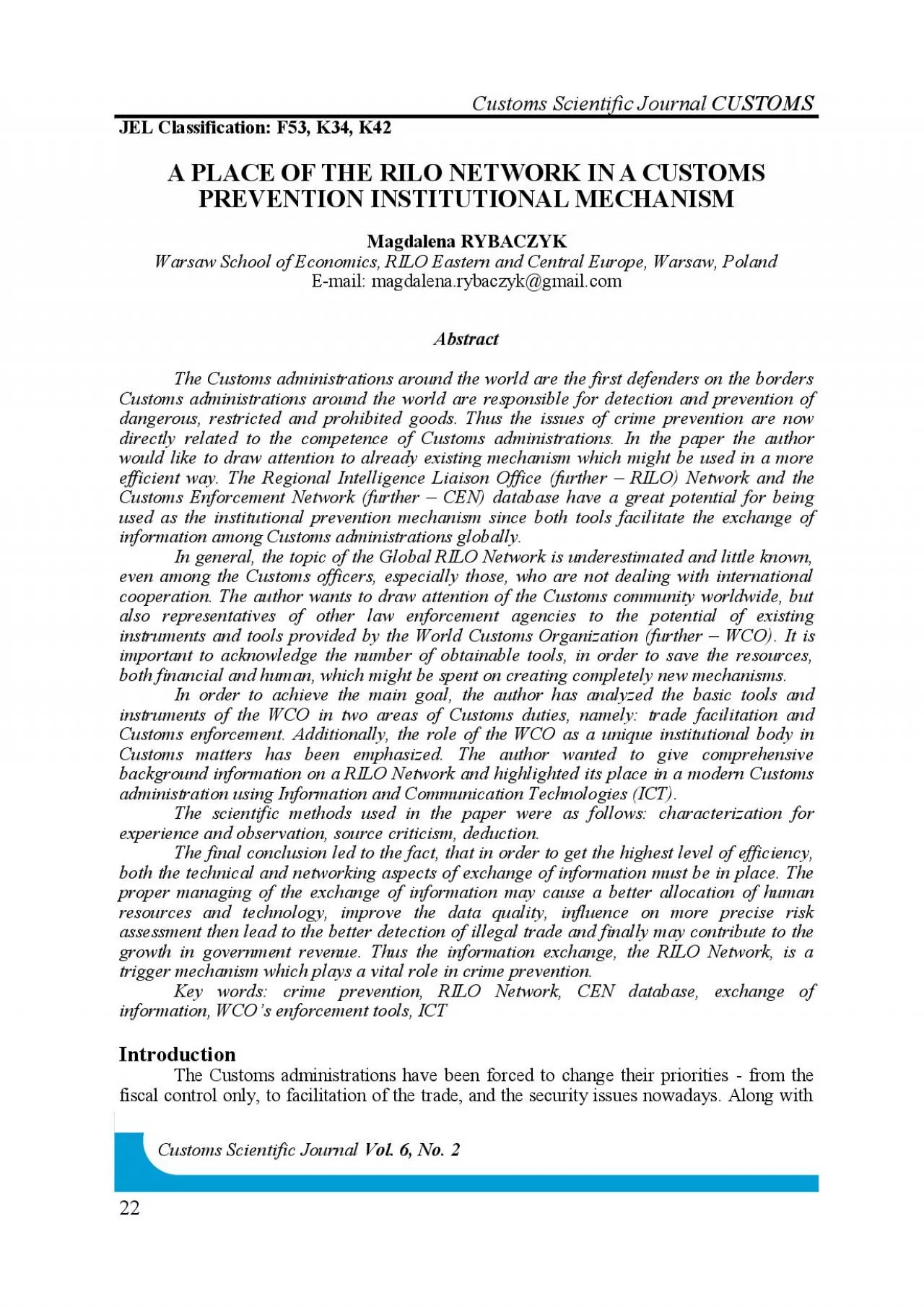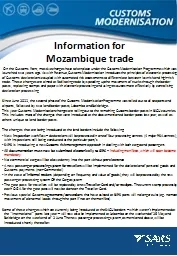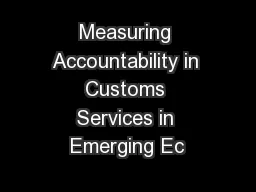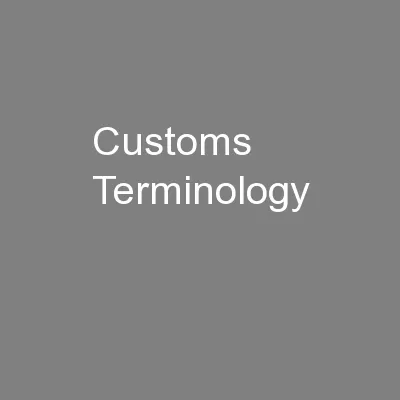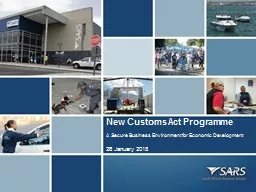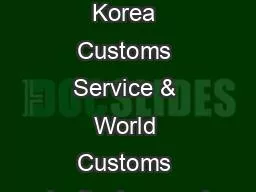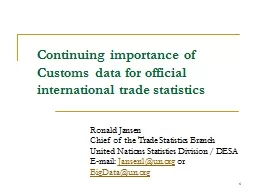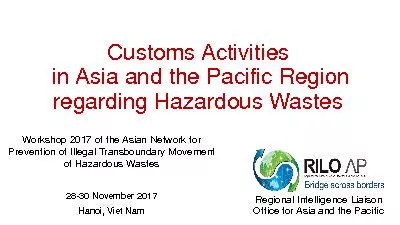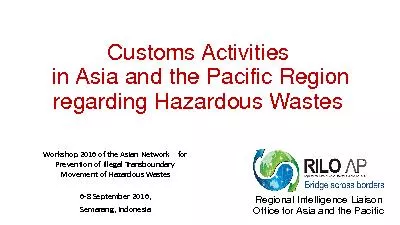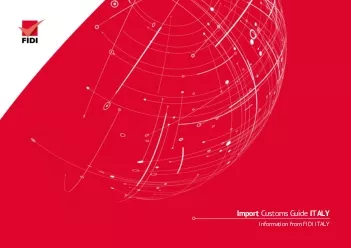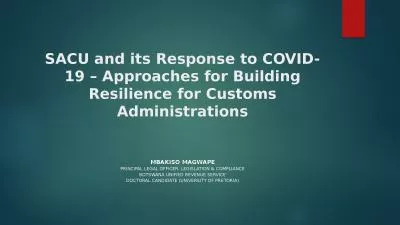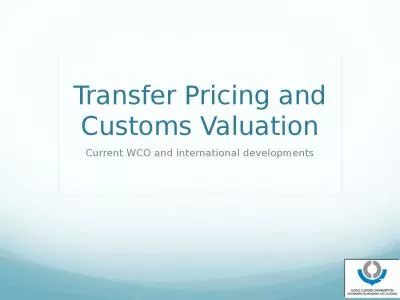PDF-Customs Scientific Journal
Author : fauna | Published Date : 2021-06-11
CUSTOMS 22 Customs Scientific Journal ol 6 No 2 JEL Classification F 53 K34 K 42 PREENTION INSTITUTIONAL MECHANISM Magdalena RYBACZYK Warsaw ScOool of Economics
Presentation Embed Code
Download Presentation
Download Presentation The PPT/PDF document "Customs Scientific Journal" is the property of its rightful owner. Permission is granted to download and print the materials on this website for personal, non-commercial use only, and to display it on your personal computer provided you do not modify the materials and that you retain all copyright notices contained in the materials. By downloading content from our website, you accept the terms of this agreement.
Customs Scientific Journal: Transcript
Download Rules Of Document
"Customs Scientific Journal"The content belongs to its owner. You may download and print it for personal use, without modification, and keep all copyright notices. By downloading, you agree to these terms.
Related Documents

